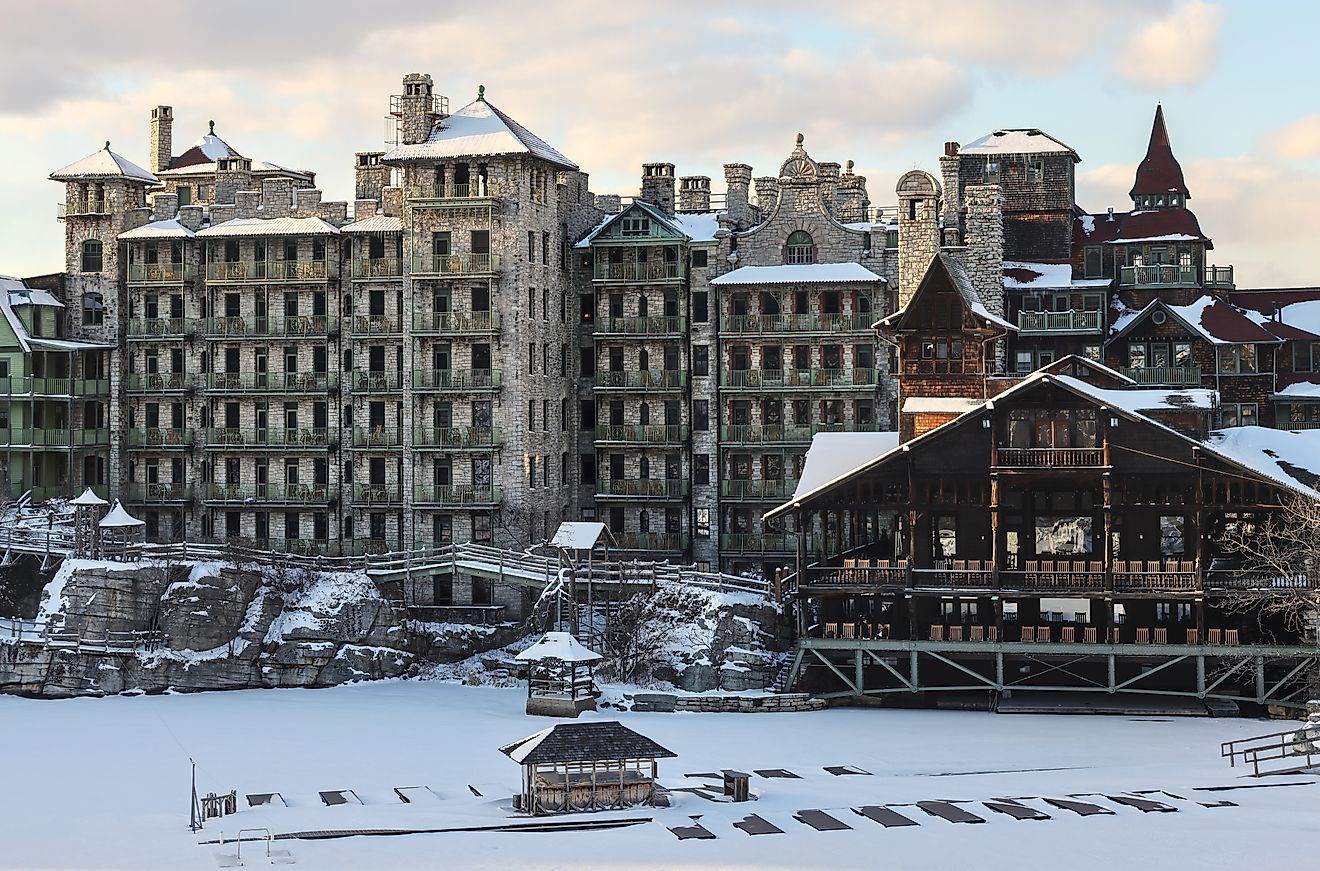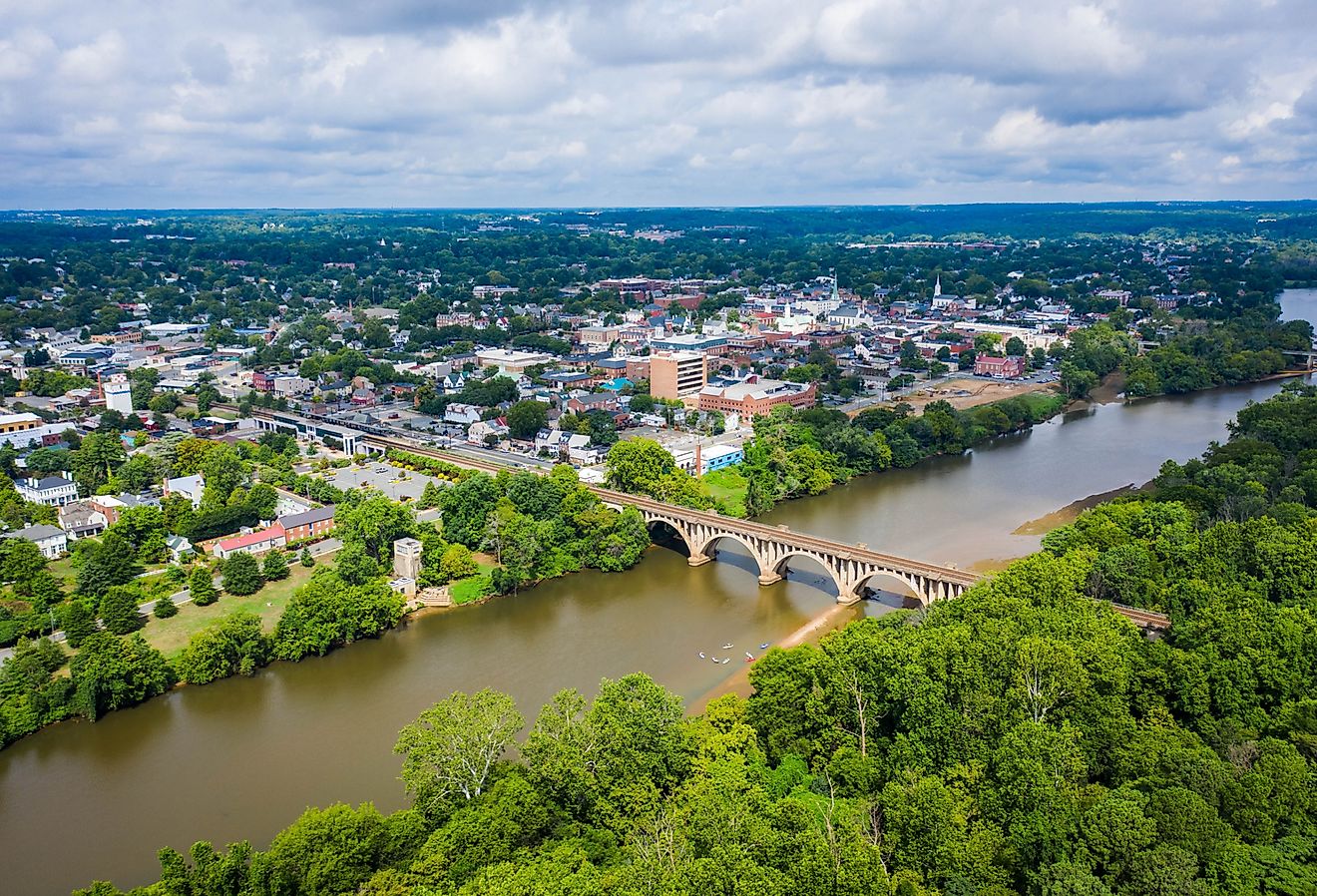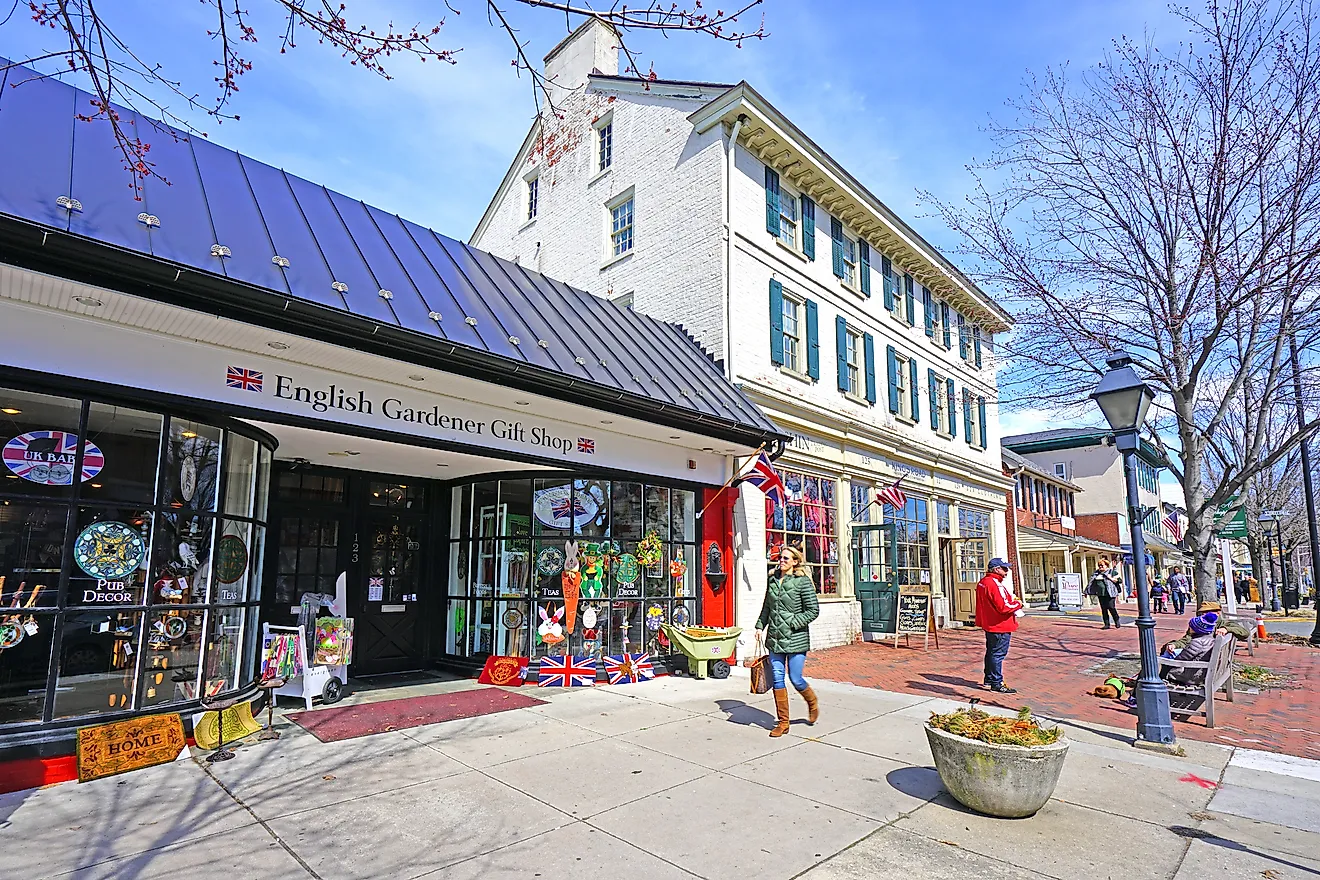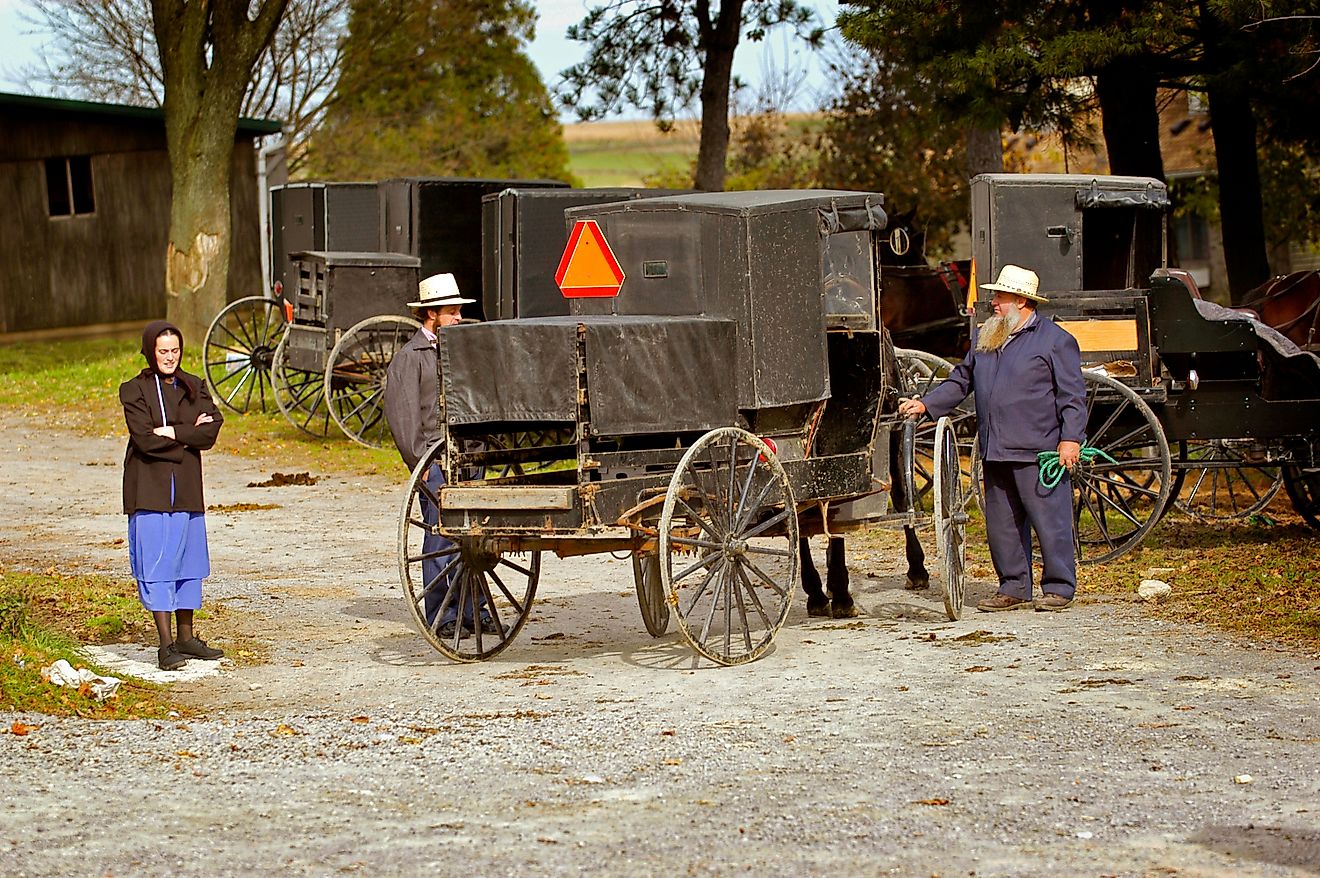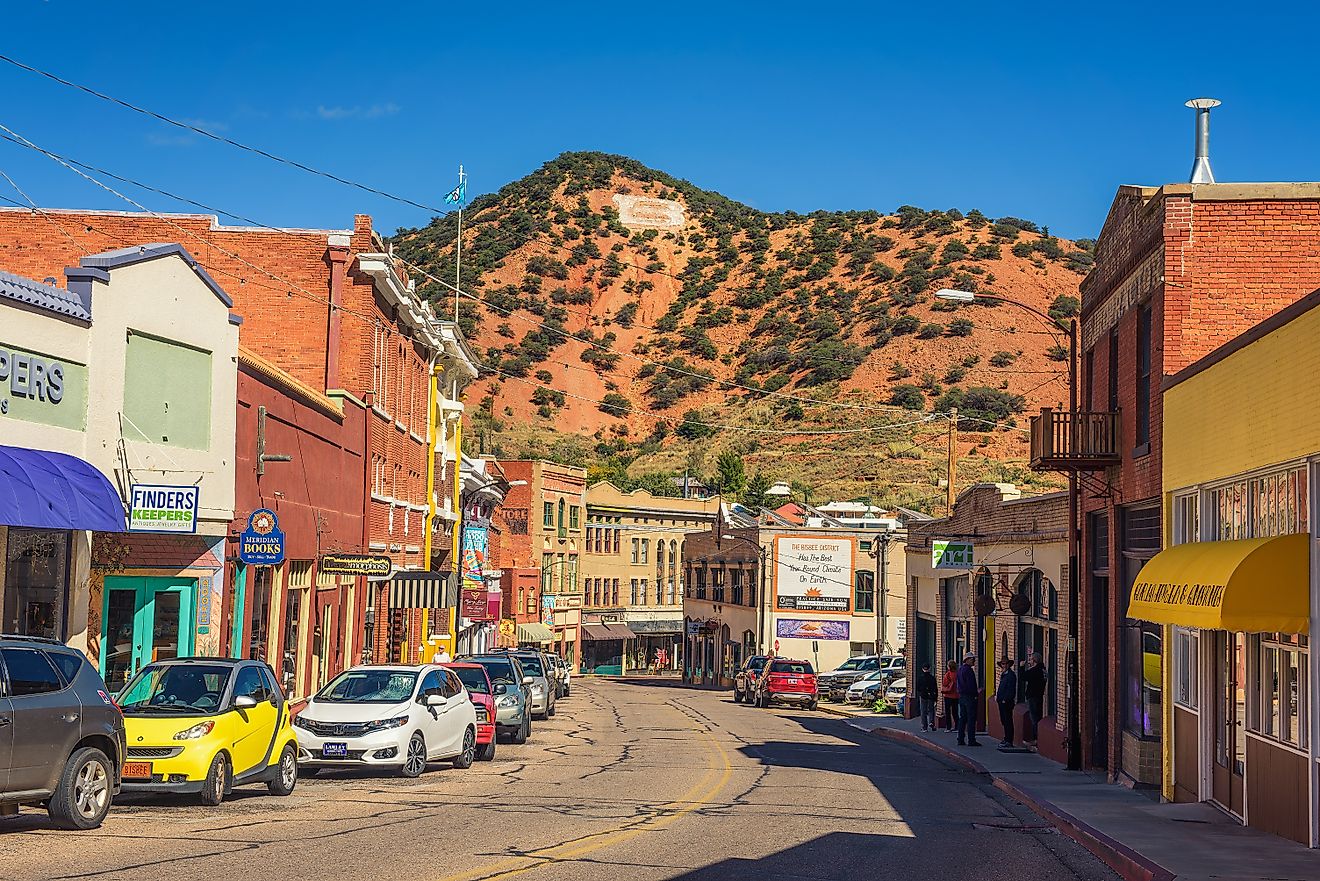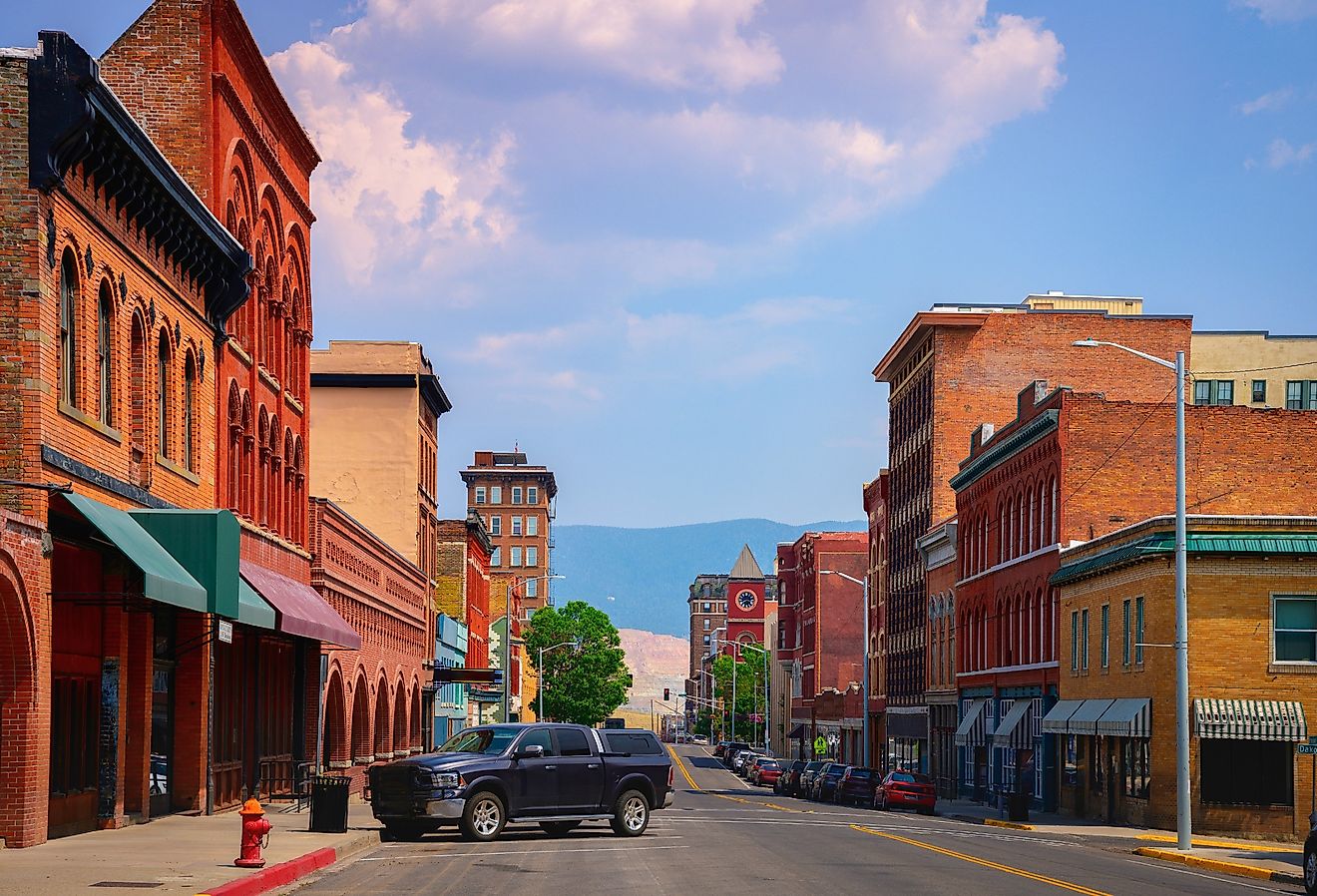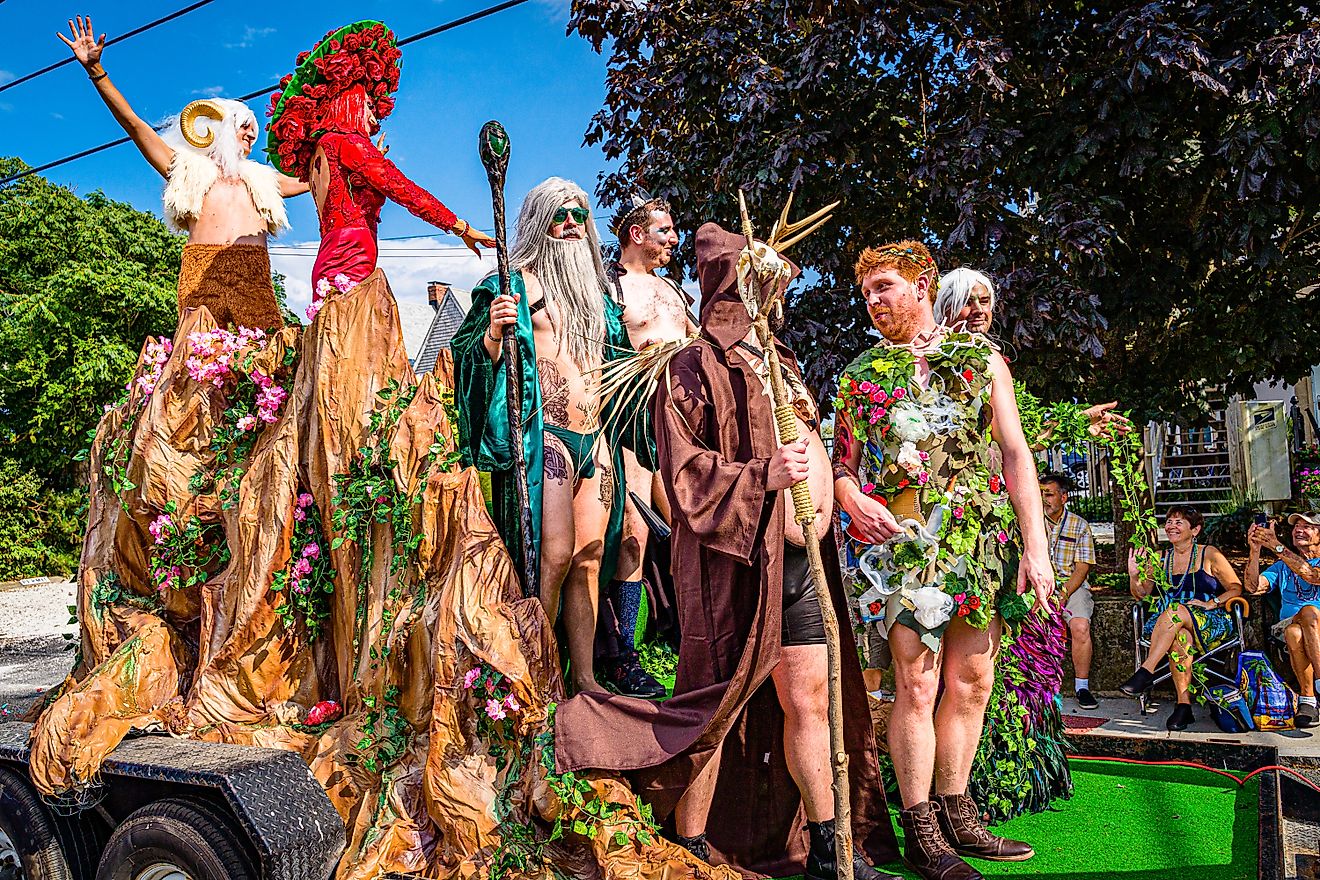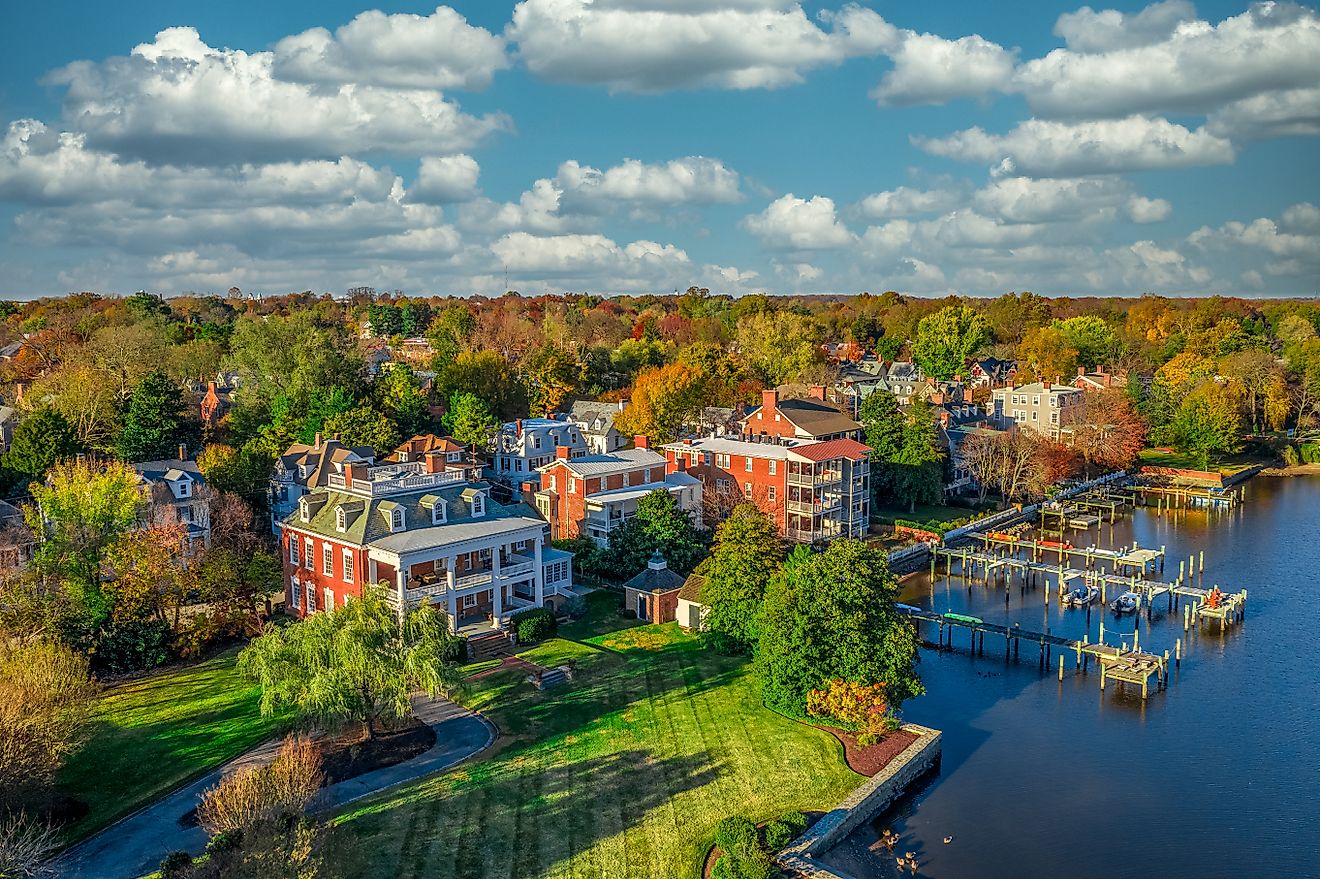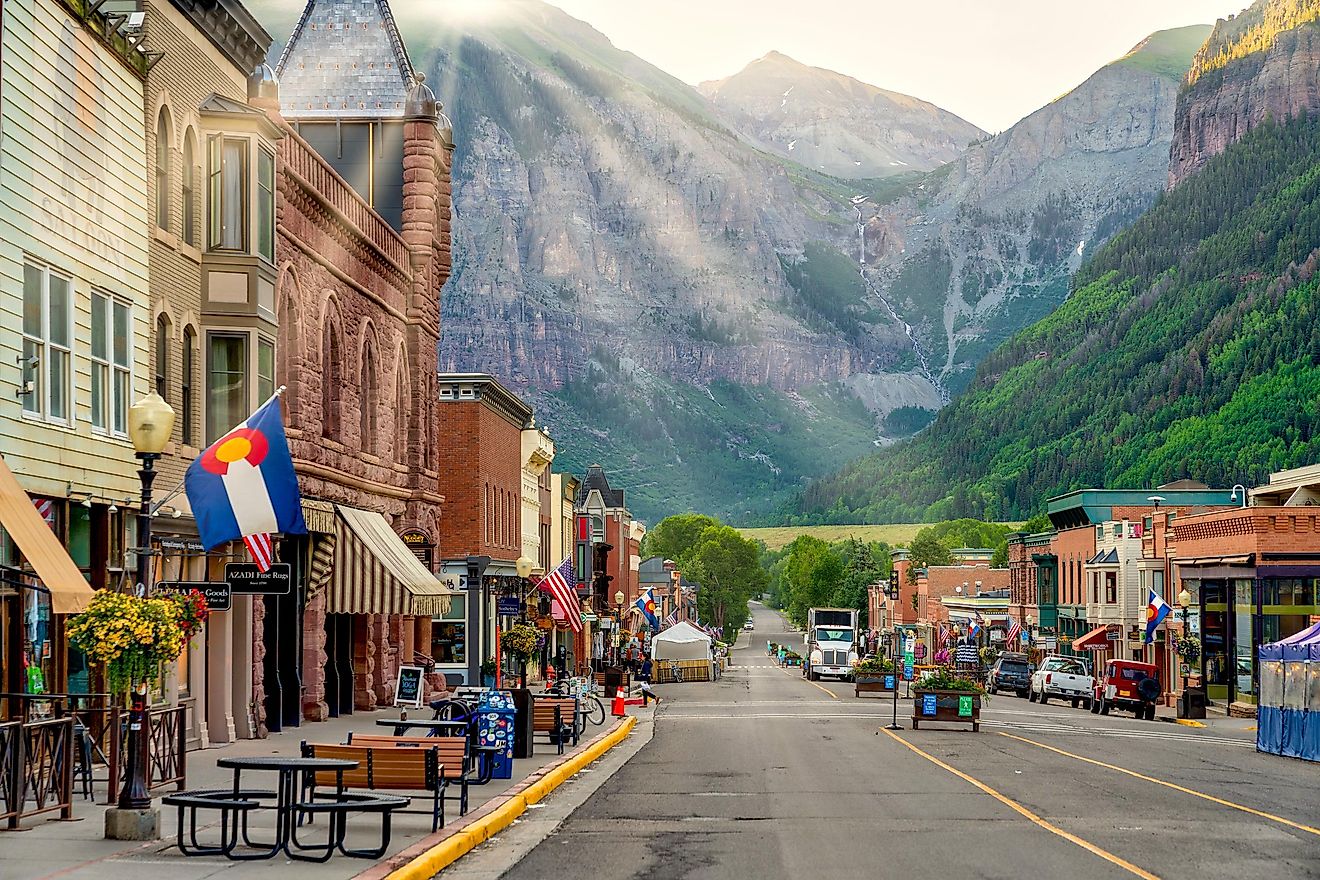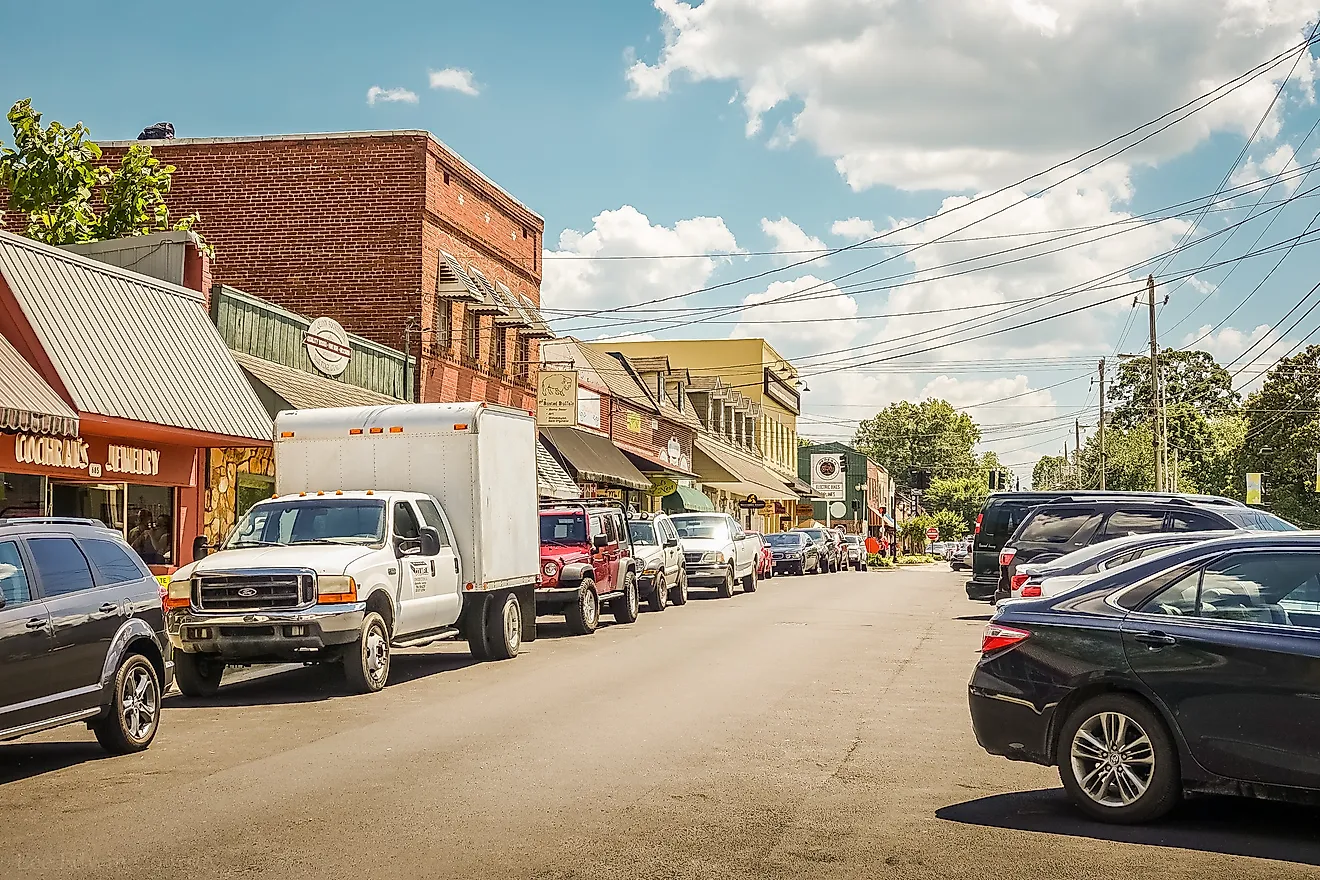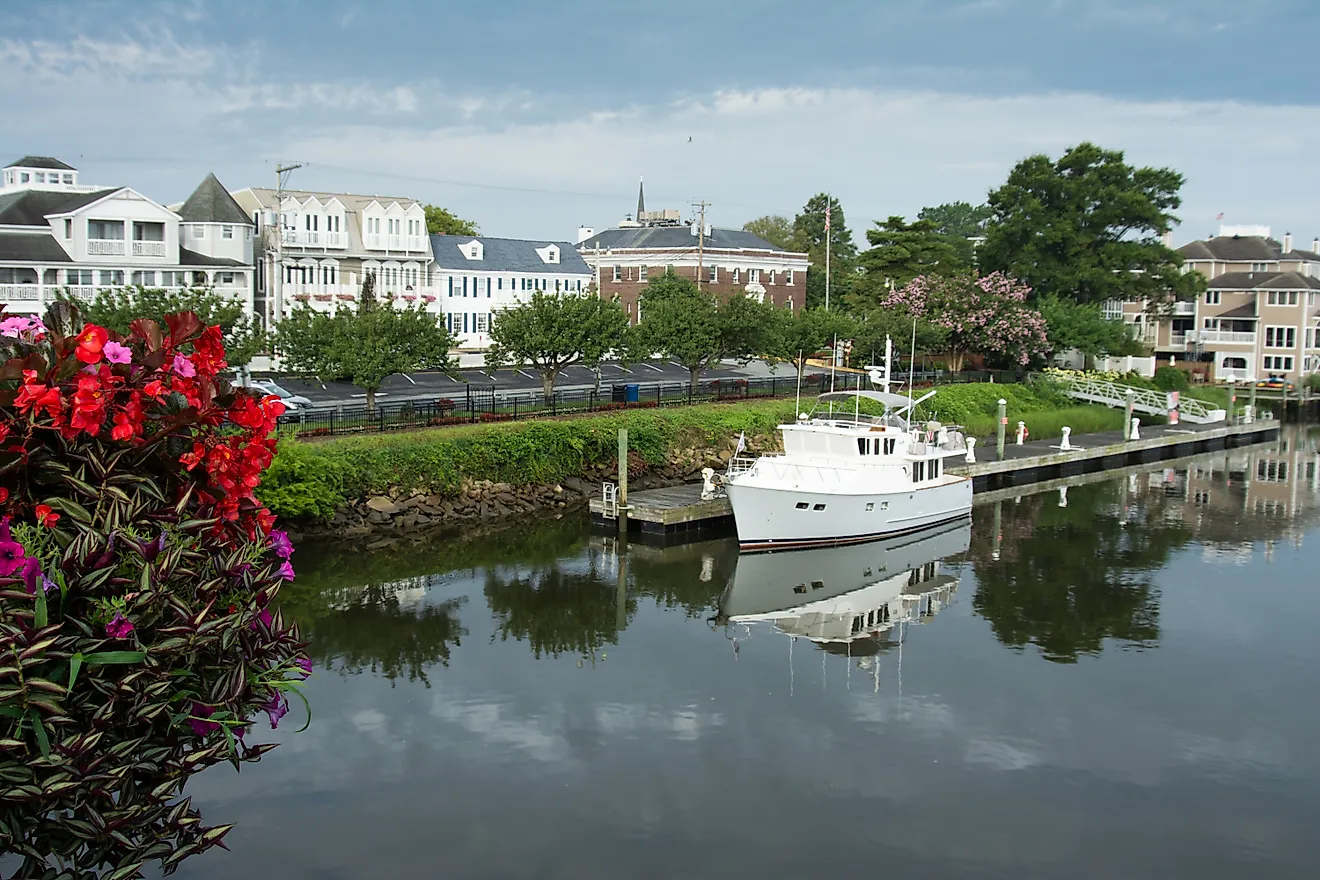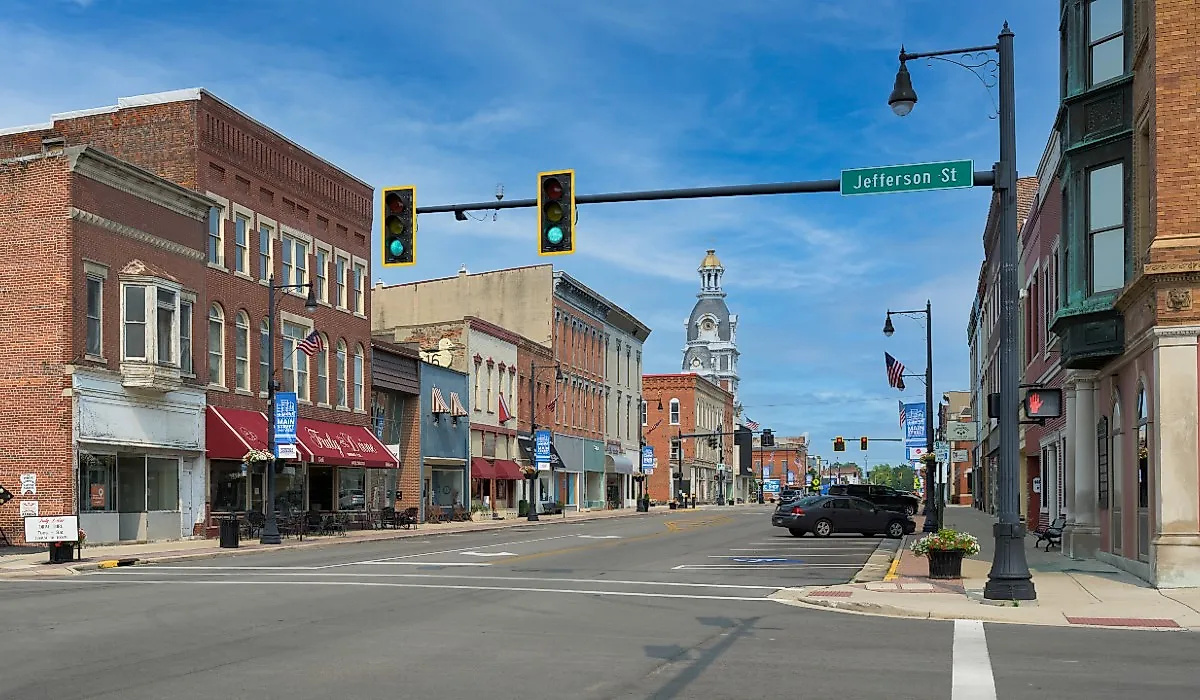
10 Wallet-Friendly Small Towns To Retire In Ohio
Follow the old water. Ohio’s most livable retirement towns tend to sit where boats once queued at canal locks, where glass cooled in kilns, and where courthouse squares still keep regular hours. Each town also photographs well, so you can preview the streets, parks, and river bends on Wikimedia or stock libraries before you ever set foot there.
In our list, there will be no generic filler; each entry names exact venues and specific things to do, so the essentials don’t get buried. The result is a practical field guide to ten Ohio communities where dollars stretch, errands stay close, and the calendar has just enough structure to make the week feel balanced.
Marietta
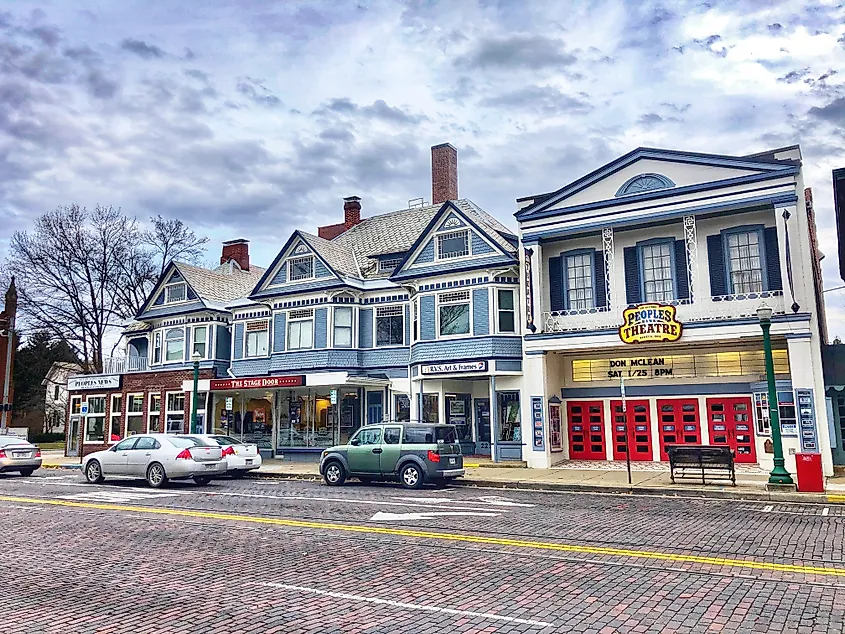
Marietta sits at the confluence of the Ohio and Muskingum Rivers and holds the title of the first permanent settlement in the Northwest Territory, founded in 1788. The town’s streets were laid out by Revolutionary War veterans, and its heritage runs deep: ancient Hopewell earthworks still shape parts of the landscape, and Marietta’s Mound Cemetery contains more Revolutionary officers’ graves than any other in the country. With a median home price of around $216,000, it offers a historically rich environment at a cost well below the state average.
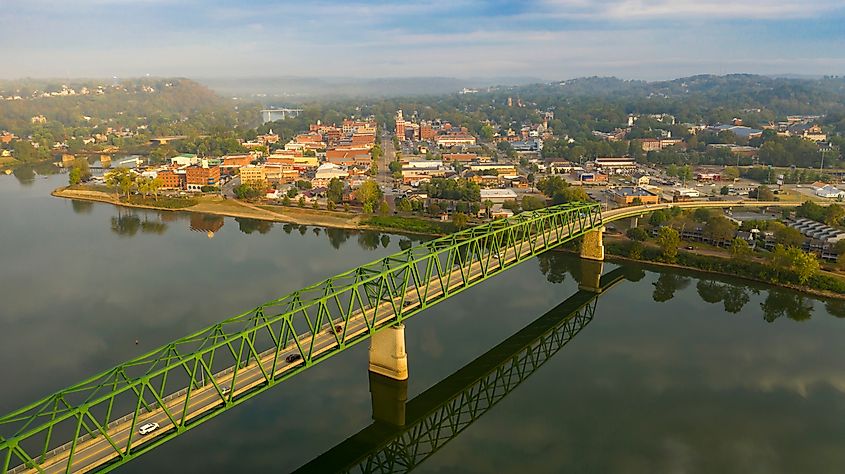
The restored 19th-century district of Harmar Village features antique shops and the cozy Busy Bee Restaurant, known for its scratch-made pies. The Campus Martius Museum preserves the original fort site and showcases artifacts from early frontier life. Riverside walks along the Ohio Riverfront Park are especially scenic in fall, while nearby Marietta College adds culture and lectures open to the public. The Lafayette Hotel, still operating on the waterfront, offers a glimpse into the town’s steamboat era and houses the Gun Room, a themed restaurant with a collection.
Tiffin
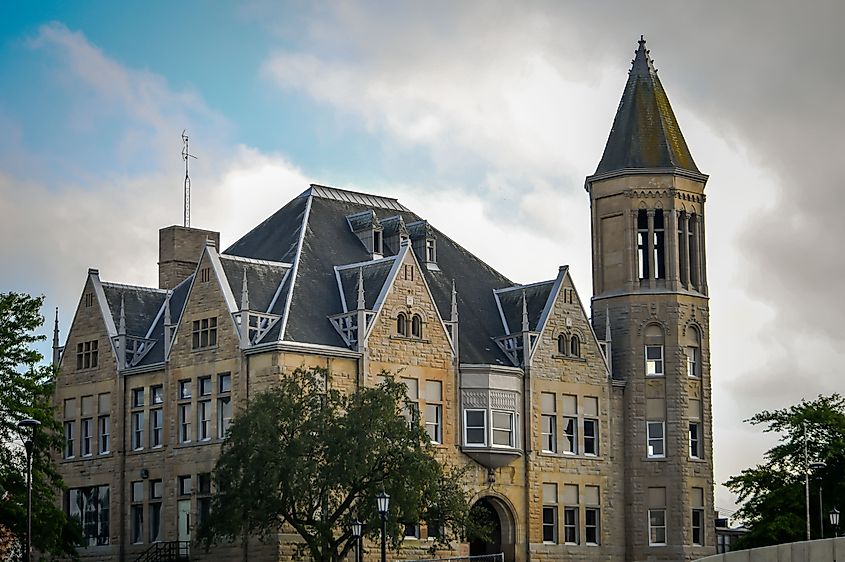
Tiffin built its economy on glass. By the early 1900s, it was one of the nation’s leading producers of art glass, and that legacy still defines parts of the town today. The Tiffin Glass Museum preserves rare original pieces and the molds used to make them, while retired glassworkers volunteer as docents. The town is anchored by two small colleges, Heidelberg and Tiffin University, which contribute music programs, lectures, and sports events to the community calendar. With a median home price of around $180,000, housing remains affordable without sacrificing stability or services.
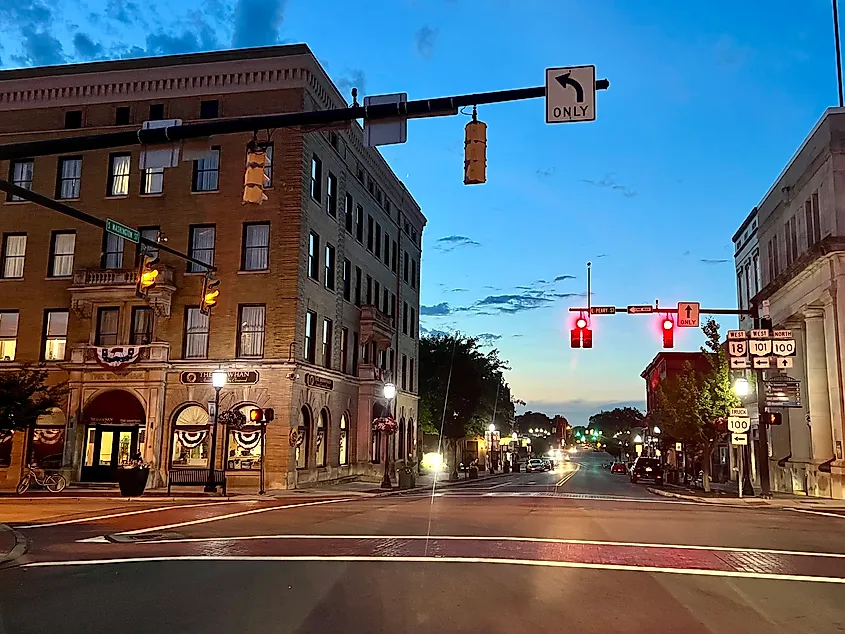
The Ritz Theatre, a restored 1928 movie palace downtown, still hosts live theater and film screenings in its original red-velvet interior. Nature trails circle Hedges-Boyer Park, where retirees often walk the shaded paths or fish in the stocked pond. The Empire at 138, housed in a former bank, offers lunch in the vault and an upstairs piano lounge on weekends. On market days, downtown vendors set up near The Laird Arcade, a late 19th-century commercial building now filled with specialty shops and offices.
Ashland
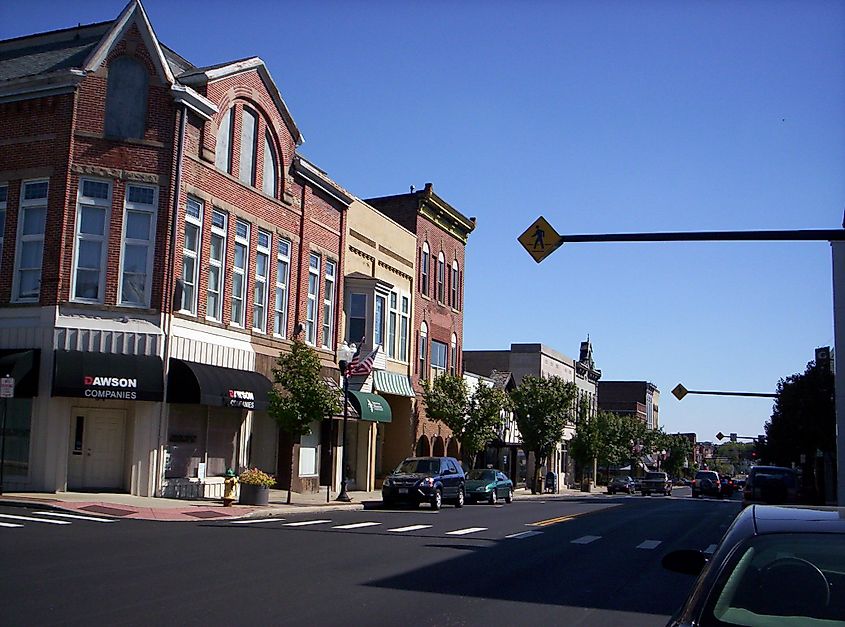
Ashland is the origin point of Grandpa’s Cheesebarn, a regional destination and reminder of the town’s family-run business roots. Located at the crossroads of US-42 and I-71, it’s a small town with logistical reach, an hour from Cleveland, less from Mansfield. Ashland University adds stability and local investment, but the town remains practical for retirees: the median home price hovers around $185,000, and utility costs and property taxes are below state averages.
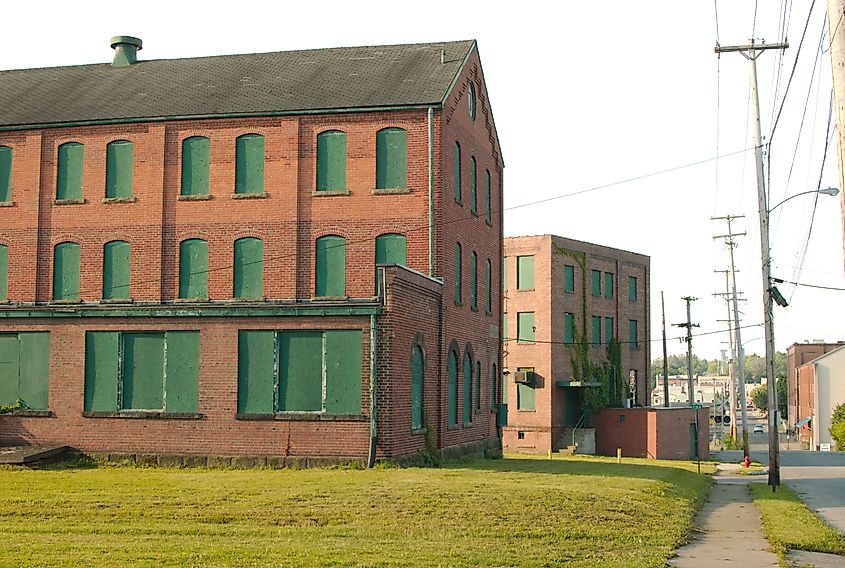
Brookside Park contains a staffed pool, bandshell, and a disc golf course spread across hilly terrain. Downtown, Uniontown Brewing Co. operates inside a former horse livery and is known for its seasonal amber ales and pulled pork flatbreads. Ashland BalloonFest is held each summer at Freer Field and draws crowds for three days of launches, with room to walk the surrounding prairie trails in quieter seasons. On Main Street, Downtown Perk serves espresso and hosts open mic nights, often with faculty musicians from the university.
Coshocton
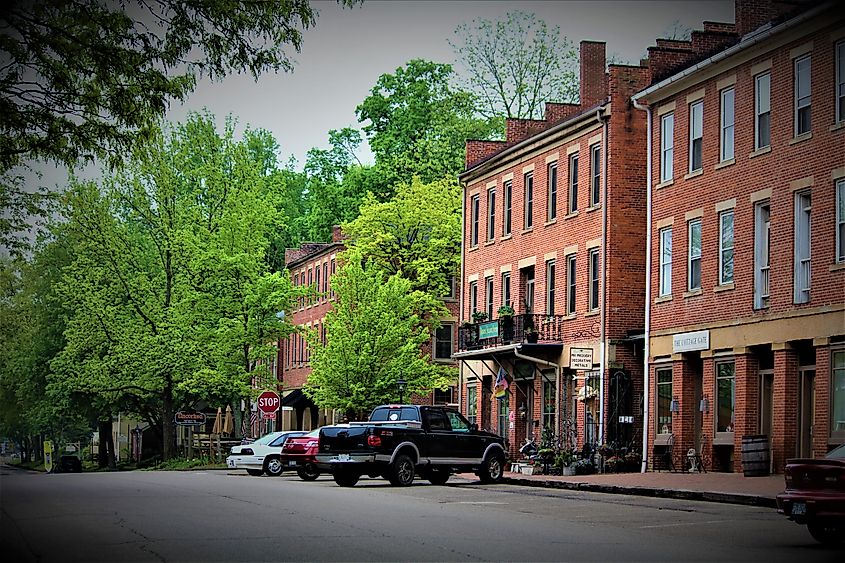
Coshocton developed along old canal lines, and much of that infrastructure has been preserved in Roscoe Village, a fully restored 1830s canal town operated as a living history site. The area features original brick buildings, a blacksmith demonstration, and costumed interpreters. The canal itself is no longer active, but towpaths and signage remain. With a median home price around $146,000, Coshocton ranks among the lowest-cost retirement towns in Ohio, yet it has maintained core civic institutions and small-scale tourism infrastructure.
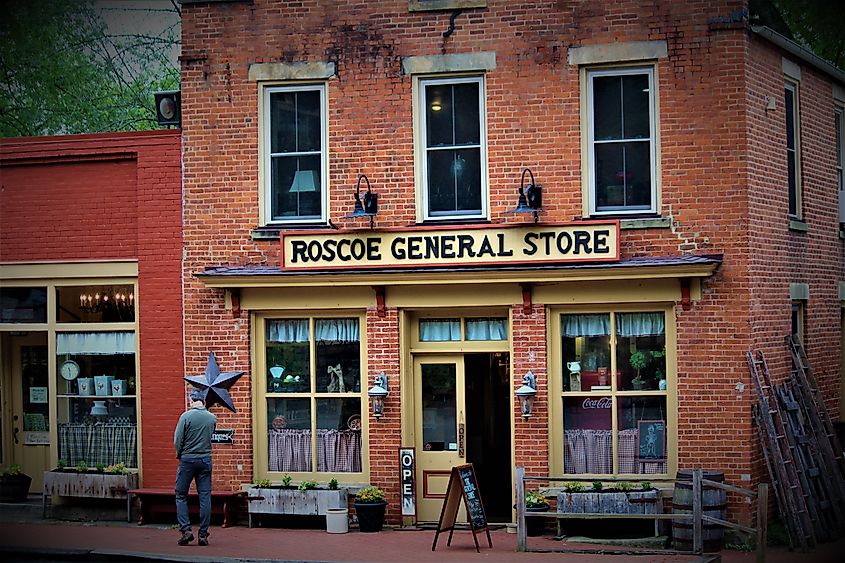
The Johnson-Humrickhouse Museum holds collections that range from Native American tools to regional quilts, housed in a WPA-era building just across from the courthouse square. Clary Gardens, a 20-acre public garden on the town’s edge, has a small amphitheater and walking trails through native plantings. Hannah Marie’s Bakery on Main Street sells cake donuts by the dozen and functions as a regular meeting spot for locals.
Zanesville
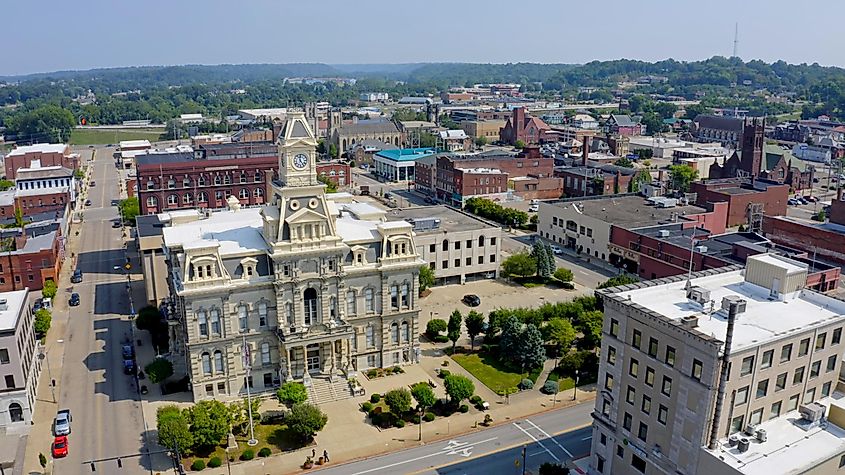
Zanesville is one of the few American towns with a Y-shaped bridge, built over the junction of the Licking and Muskingum Rivers, which can be approached and exited from all three directions. It served briefly as Ohio’s state capital and later became a center for art pottery in the early 20th century. That legacy continues at the Zanesville Museum of Art, which holds a dedicated collection of Ohio ceramics and rotating exhibits featuring Midwestern artists. The median home price is around $198,000, keeping it below the state average while offering access to hospitals, transit routes, and full municipal services.
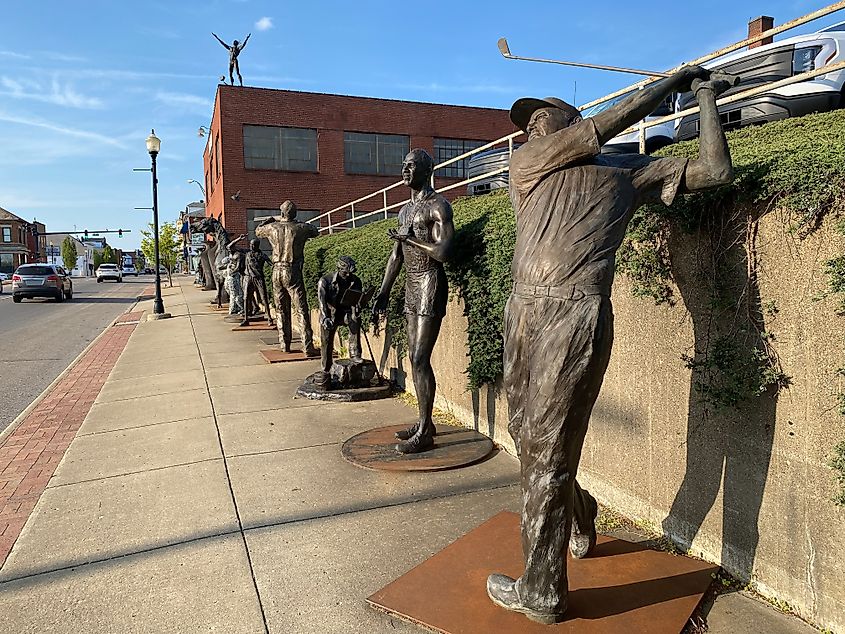
Weasel Boy Brewing Co. overlooks the river and hosts regular jazz nights along with pizza made from spent grains. Thirty minutes southeast, The Wilds operates as a safari-style conservation center on reclaimed coal mining land and offers open-air bus tours with rhinos, giraffes, and cheetahs. Closer to the city, Mission Oaks Gardens contains a mix of native and cultivated plantings and is open to the public year-round. Adornetto’s, a local Italian restaurant in business since 1958, remains one of the most frequented dinner spots, known for its baked spaghetti and house-made bread.
Chillicothe
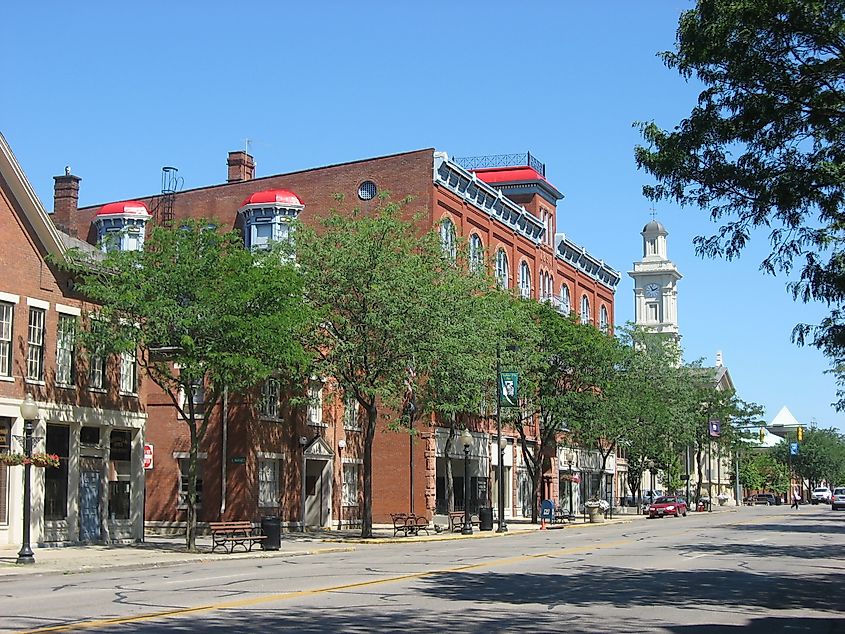
Chillicothe was Ohio’s first state capital, and its geography, set between river valleys and ancient earthworks, made it central long before that. The city sits within the Hopewell Culture National Historical Park, a network of ceremonial mounds now part of a UNESCO World Heritage site. Dozens of the mounds remain visible and walkable, with interpretive trails surrounding the main complex. The median home price in Chillicothe is around $198,000, offering retirees access to national historic landmarks, a regional medical center, and an active town core without exceeding the state average.
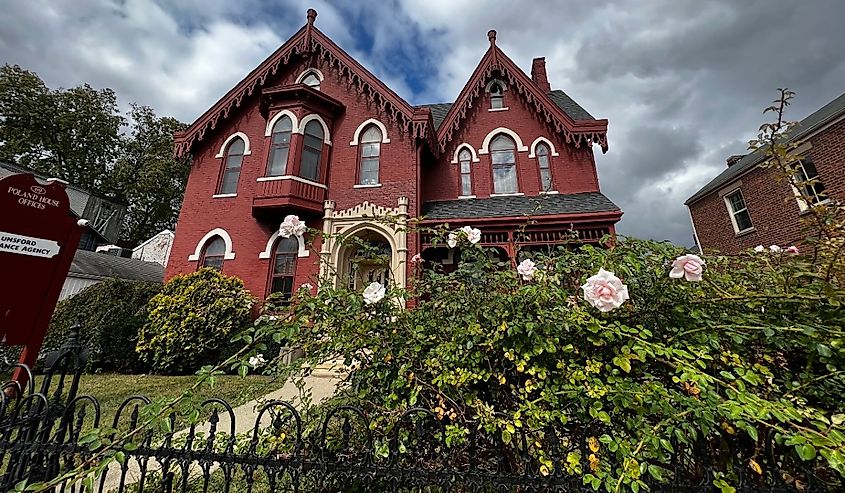
Yoctangee Park borders downtown and includes a lake, open-air theater, and the Pump House Center for the Arts, located in the former waterworks building. Adena Mansion and Gardens, the restored 1807 home of Thomas Worthington, sits just north of town and overlooks the landscape that inspired the Ohio state seal. The Mighty Children’s Museum anchors the family side of town life, but also hosts intergenerational events that draw broader community involvement. For breakfast or lunch, the Paper City Coffee shop on Second Street serves soups and espresso in a space staffed partly by local teens in a job-readiness program.
Mount Vernon

Mount Vernon maintains a visible industrial past, but its rail lines have been converted into trails, and its downtown is now anchored by restored civic buildings. The town’s most distinct feature is Ariel-Foundation Park, built on the grounds of a former glassworks. The park includes a 280-step climb up the factory’s old smokestack, now converted into a viewing tower, along with steel ruins left intact around reflective lakes and trails. The town’s median home price is just under $239,000, keeping it below the state median while offering access to hospitals, a theater, and regional colleges.
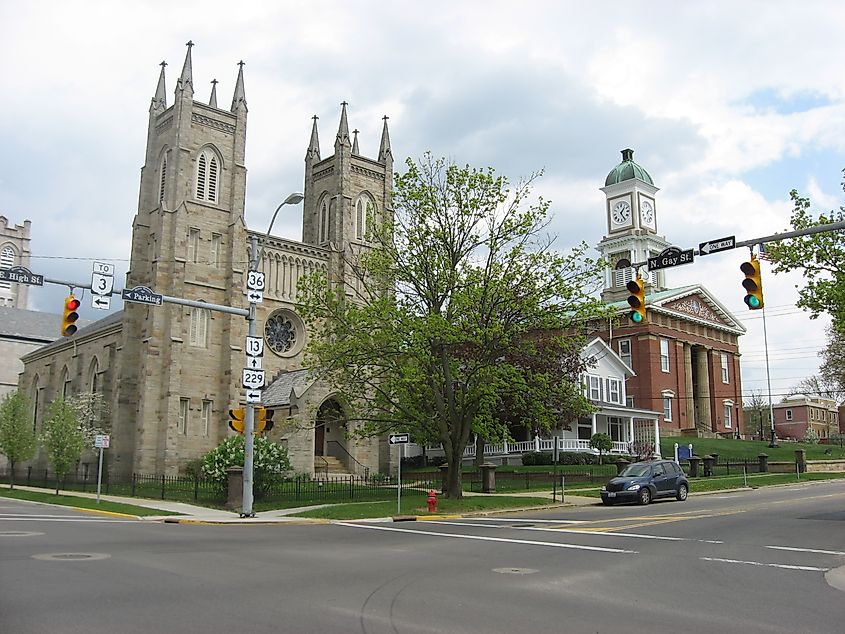
The Woodward Opera House, the oldest known authentic 19th-century theater in the U.S., has been reopened after a decades-long restoration and now hosts concerts, lectures, and touring productions. South of the square, Paragraphs Bookstore doubles as a community hub and carries titles by local and Ohio-based writers. The Kokosing Gap Trail begins at Mount Vernon and follows the old Pennsylvania Railroad line, with benches and mileage markers along a tree-lined route. For lunch, North Main Café offers sandwiches and quiche in a converted storefront that sees steady local foot traffic.
Piqua
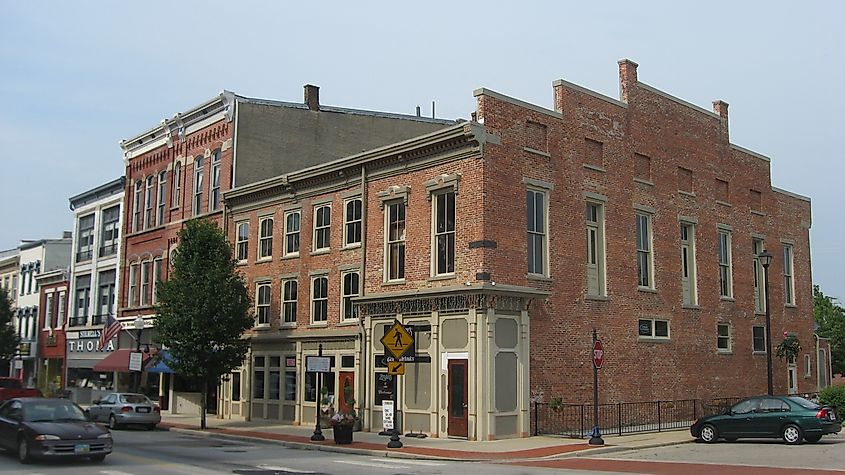
Piqua's name comes from the Shawnee phrase “Othath-He-Waugh-Pe-Qua,” and the city has retained visible traces of its Native American and canal-era past. The Johnston Farm & Indian Agency, located north of downtown, preserves an original 1811 farmhouse and includes seasonal canal boat rides pulled by mules along a reconstructed section of the Miami and Erie Canal. The town’s median home price is about $175,000, placing it well below the state average, and its infrastructure includes a regional hospital and multiple senior services without excessive density or traffic.
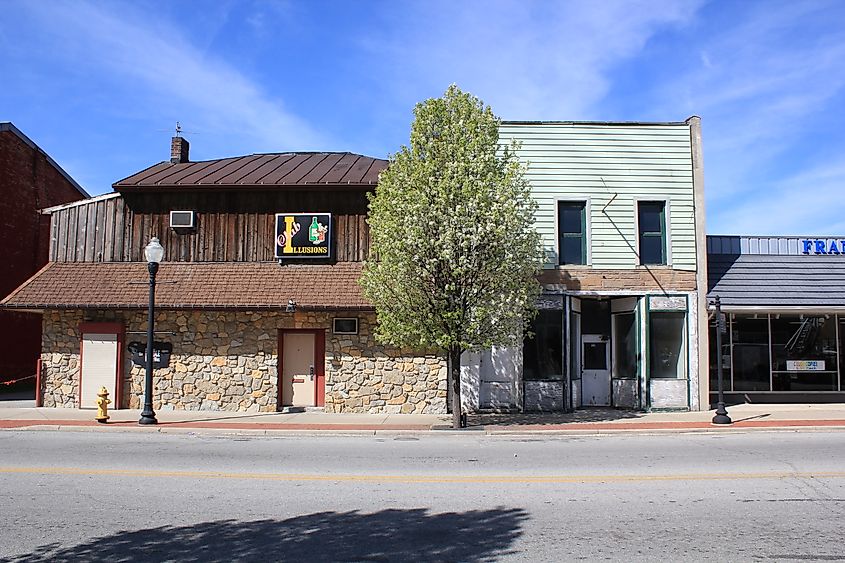
The Lock 9 Riverfront Park project has turned former industrial land into a public amphitheater and green space tied into the Great Miami River Recreation Trail, a multi-use paved path that crosses through town. The Fort Piqua Plaza, a 19th-century hotel now functioning as the city’s library and conference center, houses the Local Cantina restaurant and seasonal events in the old ballroom. Winans Chocolates + Coffees, a local chain that originated in Piqua, still operates its roasting facility downtown and offers factory tours. Piqua’s location along the river and near I-75 connects it to larger cities, but its focus on adaptive reuse and steady investment make it viable for cost-conscious retirement.
Greenville
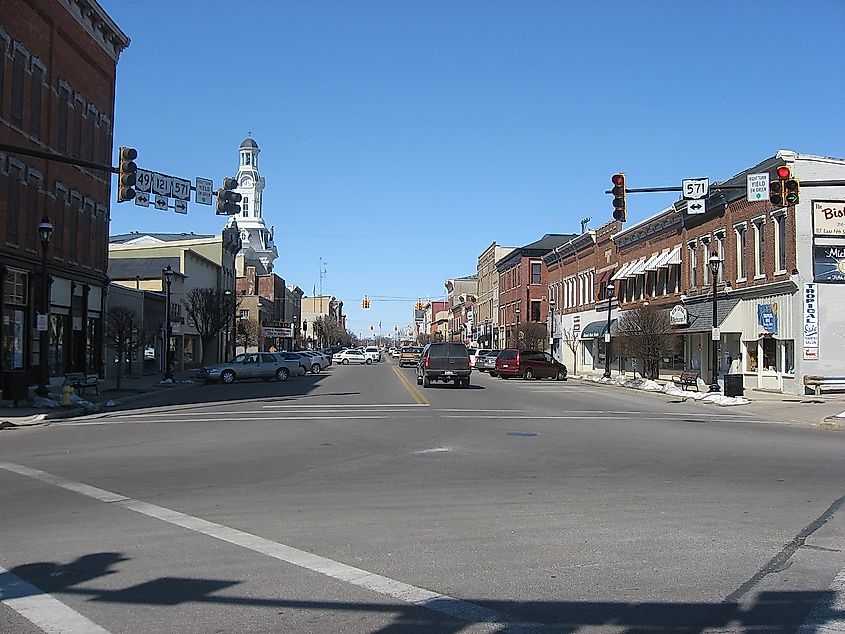
Greenville is closely tied to Annie Oakley, who was born just outside town and buried here in 1926. Her legacy is central to the Garst Museum, which houses the National Annie Oakley Center and an exhibit on the 1795 Treaty of Greenville, signed nearby and marking the end of major Native resistance in the region. The town remains a county seat with a functioning courthouse square and consistent commercial activity. The median home price is approximately $163,000, far below the state average, and property taxes in Darke County remain low.
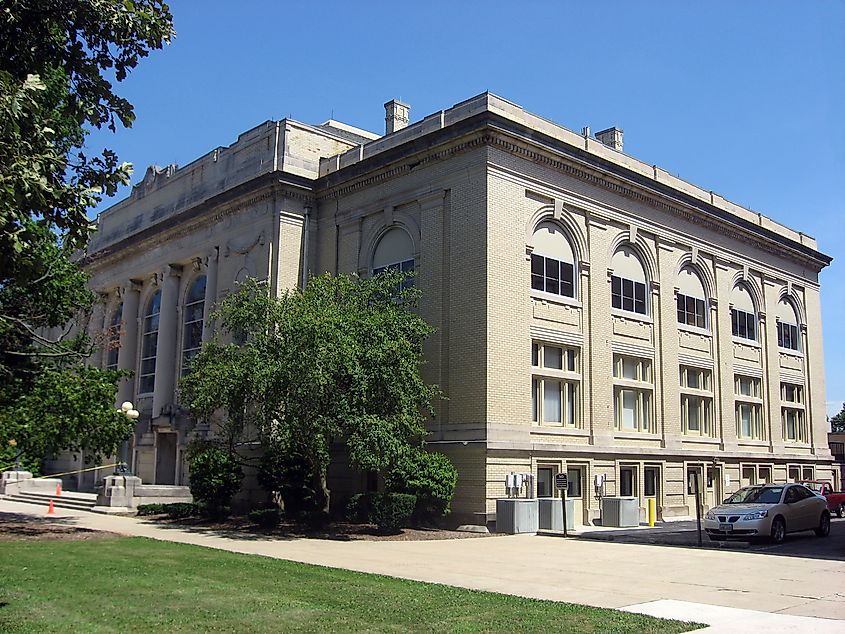
Shawnee Prairie Preserve, just west of downtown, offers prairie trails, an education center, and workshops ranging from soap making to maple syrup tapping. Bear’s Mill, a working 1849 water-powered mill, sells stone-ground flour and features rotating art exhibits in its attached gallery. Maid-Rite Sandwich Shoppe, open since 1934, serves loose meat sandwiches through a walk-up window surrounded by decades of gum stuck to the exterior wall. Downtown’s Coffee Pot hosts live music and offers breakfast seven days a week. Greenville maintains essential services and a small town core while preserving physical links to its 19th-century history, making it viable for retirement without sacrificing cost efficiency or regional identity.
Van Wert
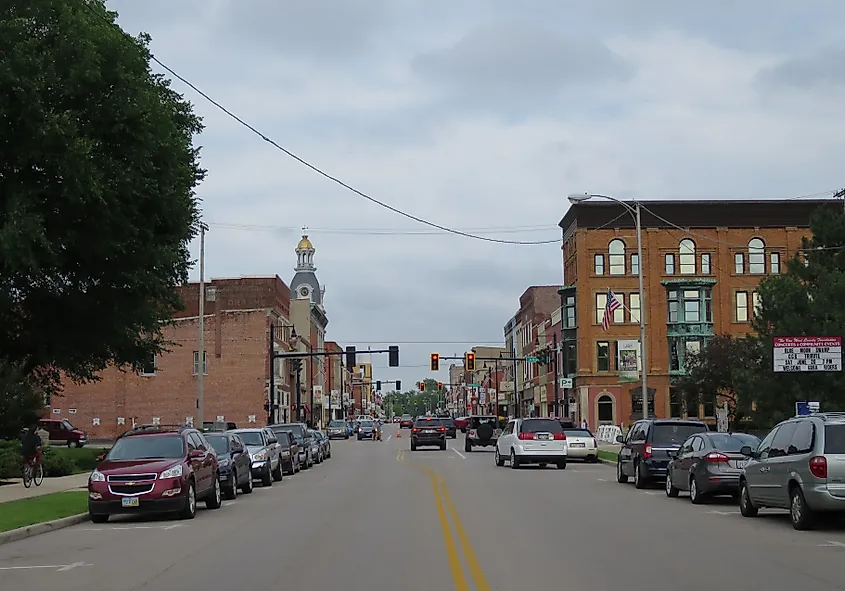
Van Wert was the first county in the United States to establish a county-funded public library, the Brumback Library, which opened in 1901 and is still in operation today. Its stone exterior and stained glass make it a civic centerpiece, and its programming includes lectures, concerts, and art exhibits. The town is also home to the Niswonger Performing Arts Center, a 1,200-seat venue that regularly books national tours, orchestras, and film screenings. Median home prices in Van Wert are around $154,000, keeping housing well below the Ohio state average while offering access to arts infrastructure rarely found in towns of this size.
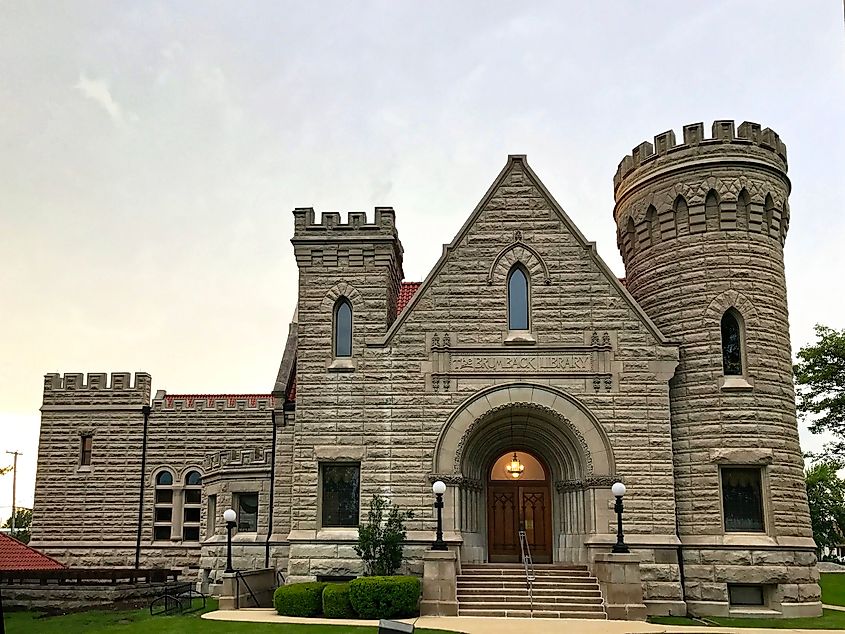
Smiley Park includes a stocked fishing pond, paved walking paths, and an 18-hole disc golf course, with amenities maintained by the city. Wassenberg Art Center operates out of a converted armory building and offers rotating exhibitions, studio space, and art instruction for adults. The Brewed Expressions Café serves coffee and sandwiches in a converted bank, with seating in the old vault and local photography on the walls.
These ten towns trade spectacle for substance: intact main streets, year-round cultural anchors, public greens, and coffee counters that still know names. Each sits under 50,000 people with home prices below Ohio’s median, stretching retirement dollars without isolation. Rivers, trails, and libraries create routine; museums and small venues keep the calendar steady. Affordability here isn’t a compromise—it’s the framework for a quieter life that remains connected to the whole state.
